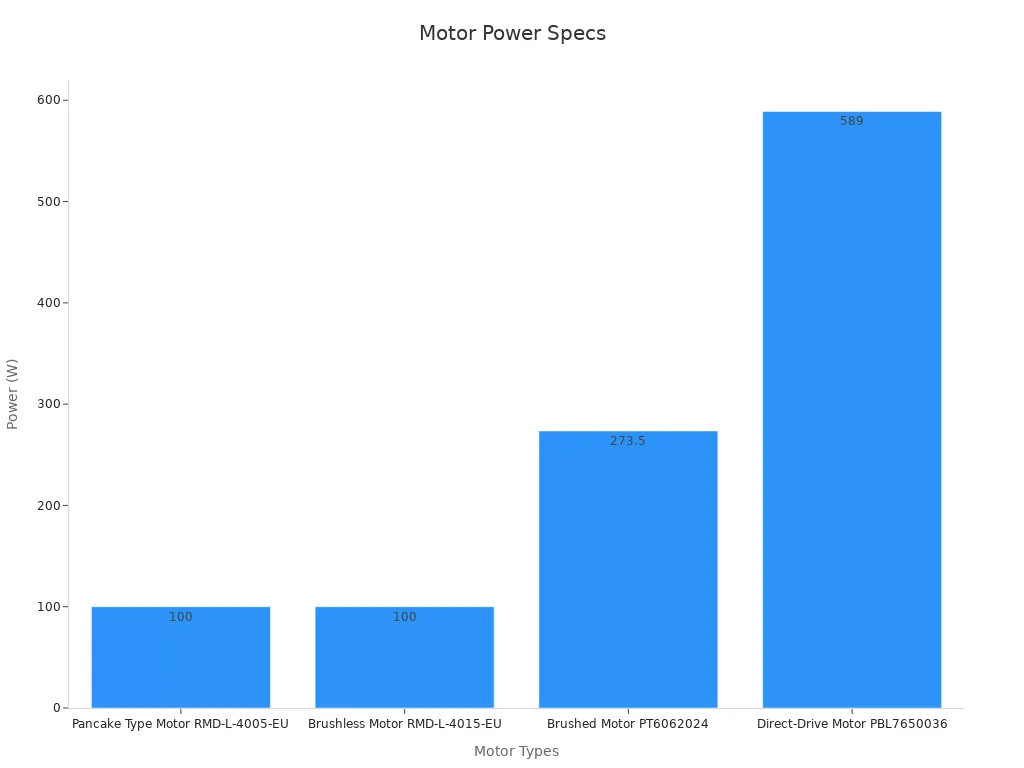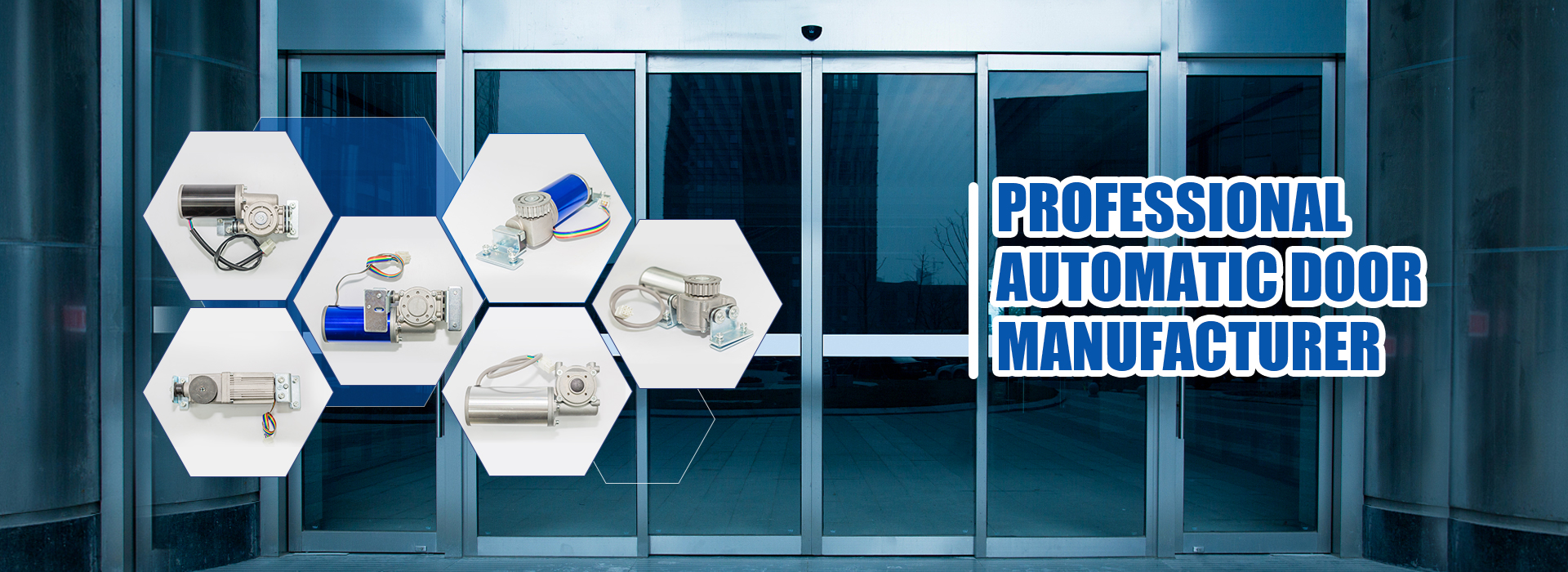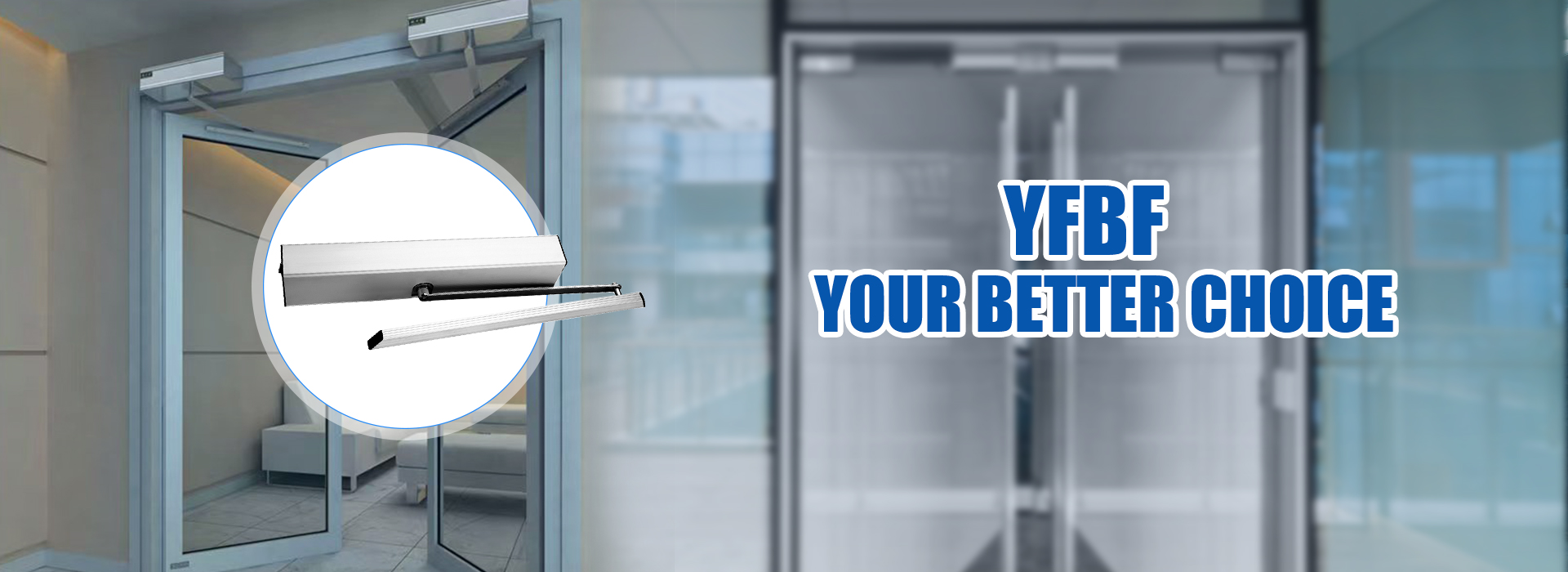
Automatic door motors simplify movement through spaces. They create effortless entry and exit, which is especially helpful for individuals with mobility challenges. These systems ensure everyone feels welcome, regardless of their physical abilities. By combining advanced technology with thoughtful design, an automatic door motor transforms buildings into more inclusive environments.
Key Takeaways
- Automatic door motors make it easy for people to enter and exit, especially those who have trouble moving around.
- Picking the right motor is important for it to work well. Think about how heavy the door is and how many people use it.
- Taking care of the motor, like cleaning sensors and oiling parts, helps it last longer and work better.
Understanding Automatic Door Motor Functionality
Automatic door motors are the backbone of modern accessibility solutions. They combine advanced components, efficient mechanisms, and diverse motor types to ensure seamless operation. Let’s explore how these systems work and what makes them so effective.
Components of Automatic Door Motors
Every automatic door motor relies on a set of key components to function smoothly. These include the motor itself, sensors, controllers, and gearboxes. The motor provides the power needed to open and close doors, while sensors detect movement or proximity to trigger the operation. Controllers act as the brain of the system, managing the motor’s actions based on sensor input. Gearboxes ensure the motor’s energy is transmitted efficiently, enabling smooth and reliable door movement.
Did you know? Some motors, like the Automatic Swing Door Motor with a 24V Brushless DC design, feature silent operation and high torque. This makes them ideal for heavy doors, ensuring durability and efficiency.
Here’s a quick look at the durability and efficiency of various motor components:
| Motor Type | Cycle Rating | Features |
|---|---|---|
| EuroDrive & Apex Pro SmartController™ | 1,000,000 or 5 Years | Designed for reliability and longevity |
| Direct Drive Operator with Apex Pro SmartController™ | 300,000 or 2 Years | Durable design for consistent operation |
| Cornell EverGard Operator with Battery Backup | Rated for 10 cycles/day | Battery backup for enhanced reliability |
These components work together to create a system that’s not only functional but also built to last.
Mechanisms of Operation
The operation of automatic door motors is a fascinating blend of technology and engineering. When a person approaches, sensors detect their presence and send a signal to the controller. The controller activates the motor, which uses energy to open the door. After a brief pause, the motor reverses its action to close the door.
Some systems use helical gear transmission for added stability. This design ensures smooth operation even for heavy doors. For example, the Automatic Swing Door Motor employs a double gearbox design to increase power output and reliability. Sensors also play a critical role in safety, preventing the door from coming into contact with users.
Types of Automatic Door Motors
Automatic door motors come in various types, each suited to specific applications. Swing-door operators are popular for pedestrian use, offering effortless opening and closing. Sliding door motors are ideal for spaces with limited room, while revolving door motors provide continuous movement for high-traffic areas.
Technical specifications further differentiate these motors. For instance, brushless motors like the RMD-L-4015-EU deliver higher torque compared to pancake-type motors. Here’s a comparison of some motor types:
| Motor Type | Power (W) | Intensity (A) | Torque (Nm) | Rotational Speed (rpm) |
|---|---|---|---|---|
| Pancake Type Motor RMD-L-4005-EU | 100 | 1.44 | 0.07 | N/A |
| Brushless Motor RMD-L-4015-EU | 100 | 1.88 | 0.22 | N/A |
| IE4 Motor 4SIE Series | 30,000 – 200,000 | N/A | 145 – 1,540 | 1,000 – 3,000 |
| Stepper Motor iMOT172S TM-CAN | 40 | 3 | 0 – 0.3 | N/A |

Each type offers unique benefits, from energy efficiency to high torque for heavy-duty applications. Choosing the right motor depends on the specific needs of the space and the type of door being automated.
Accessibility Benefits of Automatic Door Motors
Touchless Entry for Convenience
Touchless entry systems have revolutionized how people interact with doors. By eliminating the need to push or pull, these systems make entering and exiting buildings effortless. This feature is especially valuable in high-traffic areas like hospitals, airports, and shopping malls, where reducing physical contact is a priority.
For example, systems like HealthPass adapt entry procedures based on individual needs and venue conditions. They help manage visitor flow during busy times, ensuring smooth movement while maintaining safety. Real-time data analysis has shown that such systems significantly reduce crowding events, making spaces more accessible and convenient for everyone.
Automatic door motors play a crucial role in enabling touchless entry. Their advanced sensors detect movement and activate the door without requiring physical effort. This not only enhances convenience but also minimizes the spread of germs, a benefit that has become increasingly important in recent years.
Compliance with Accessibility Standards
Meeting accessibility standards is essential for creating inclusive spaces. Automatic door motors are designed to accommodate individuals with mobility challenges, including wheelchair users and the elderly. Key features like wide door openings, strategically placed sensors, and adjustable opening speeds ensure compliance with regulations.
Standards such as ANSI/BHMA A156.10 and EN 16005 outline specific requirements for automatic doors. These include limits on the force exerted by the door, safety features like obstacle-detecting sensors, and the use of safety beams to prevent accidents. By adhering to these guidelines, automatic door motors ensure safe and reliable operation for all users.
Safety is a top priority in accessibility. Features like helical gear transmission in some motors provide stability, even for heavy doors. This ensures that the door operates smoothly and safely, meeting both functional and regulatory expectations.
Supporting Mobility and Sensory Needs
Automatic door motors are a game-changer for individuals with mobility or sensory challenges. They remove physical barriers, allowing people to move freely through spaces. For someone using a wheelchair or walker, the ability to enter a building without assistance can be empowering.
These systems also cater to individuals with sensory sensitivities. Quiet operation, like that offered by the 24V Brushless DC Automatic Swing Door Motor, ensures a comfortable experience for users who may be sensitive to noise. Additionally, sensors prevent the door from closing too quickly, reducing the risk of accidents and creating a safer environment.
Automatic doors are recognized as a key feature in improving mobility for those with functional limitations. By addressing both physical and sensory needs, they contribute to a more inclusive and welcoming environment for everyone.
Additional Advantages of Automatic Door Motors
Energy Efficiency and Environmental Impact
Automatic door motors contribute to energy savings by reducing unnecessary heating or cooling loss. When doors open only when needed, they help maintain indoor temperatures. This is especially useful in spaces like malls or hospitals, where doors are frequently used. Some motors, like those with brushless DC designs, operate with high efficiency, consuming less power while delivering strong performance.
Energy-efficient motors also support environmental goals. By lowering energy consumption, they reduce the carbon footprint of buildings. Businesses that prioritize sustainability often choose these systems to align with green building standards. Over time, this not only benefits the planet but also reduces operational costs.
Safety Features for Secure Operation
Safety is a key feature of automatic door motors. Advanced sensors prevent doors from closing on users, ensuring a secure experience. These sensors detect obstacles and stop the door’s movement immediately. This is especially important in high-traffic areas where accidents could occur.
Some systems also include backup power options. These ensure the door operates even during power outages. Features like helical gear transmission add stability, making the system reliable for heavy doors. With these safety measures, users can trust the doors to function smoothly and securely.
Integration with Smart Systems
Smart systems take automatic door motors to the next level. IoT-enabled doors allow for remote monitoring and diagnostics. This makes it easier to identify issues before they become problems. For example, predictive maintenance reduces unplanned downtime by providing advanced diagnostic information.
| Benefit | Description |
|---|---|
| Real-time Monitoring | Provides key diagnostic information and tracks performance trends. |
| Predictive Maintenance | Reduces downtime with alarms and advanced diagnostics. |
| Energy Management | Monitors energy consumption to improve efficiency. |
Additionally, AI integration enhances user experience. These systems adapt to user behavior, optimizing door operation for convenience and efficiency. Businesses benefit from smoother operations, while users enjoy a seamless experience.
Tip: Smart systems not only improve functionality but also extend the lifespan of automatic door motors.
Practical Insights for Choosing and Maintaining Automatic Door Motors

Selecting the Right Motor for Accessibility
Choosing the right motor ensures smooth and reliable operation. Start by considering the type of door and its usage. For heavy doors, a motor with high torque, like the 24V Brushless DC Automatic Swing Door Motor, is a great choice. It offers silent operation and long service life, making it ideal for spaces like hospitals or offices.
Next, think about the environment. For high-traffic areas, opt for motors with advanced sensors to handle frequent use. Motors with helical gear transmission provide stability and are perfect for heavy-duty applications. Always check if the motor complies with accessibility standards to meet the needs of all users.
Maintenance Tips for Longevity
Proper maintenance keeps automatic door motors running efficiently. Regular inspections help identify wear and tear early. Clean the sensors and gearboxes to prevent dust buildup. Lubricate moving parts to reduce friction and extend their lifespan.
Here are some tips to sustain motor performance:
- Use predictive maintenance to anticipate repairs and avoid downtime.
- Leverage AI-based analytics to monitor motor health.
- Schedule professional maintenance to ensure expert care.
These practices not only improve efficiency but also extend the motor’s lifetime.
Addressing Common Issues
Automatic door motors may face occasional hiccups. Sensors might fail to detect movement, or the motor could make unusual noises. In such cases, check for obstructions or loose connections. If the problem persists, consult a professional.
Backup power systems can prevent disruptions during outages. Motors with advanced safety features, like obstacle detection, minimize risks and ensure smooth operation. Regular upkeep helps address these issues before they escalate.
Automatic door motors make spaces more accessible and inclusive. Their benefits include touchless entry, energy efficiency, and smart integration. Nearly 99% of consumers prefer automatic doors for convenience.
| Benefit | Description |
|---|---|
| Enhanced Security | Controlled access improves building safety. |
| Operational Efficiency | Programmable locking reduces manual effort. |
| Future-Proof Solution | Technology evolves to meet modern needs. |
By maintaining these systems, users maximize their effectiveness and longevity.
Author Information
Edison
Tel: +86-15957480508
Email: edison@bf-automaticdoor.com
FAQ
What types of doors can automatic door motors operate?
Automatic door motors work with swing, sliding, and revolving doors. They adapt to various door sizes and weights, ensuring smooth operation for different environments.
Post time: May-26-2025
- English
- French
- German
- Portuguese
- Spanish
- Russian
- Japanese
- Korean
- Arabic
- Irish
- Greek
- Turkish
- Italian
- Danish
- Romanian
- Indonesian
- Czech
- Afrikaans
- Swedish
- Polish
- Basque
- Catalan
- Esperanto
- Hindi
- Lao
- Albanian
- Amharic
- Armenian
- Azerbaijani
- Belarusian
- Bengali
- Bosnian
- Bulgarian
- Cebuano
- Chichewa
- Corsican
- Croatian
- Dutch
- Estonian
- Filipino
- Finnish
- Frisian
- Galician
- Georgian
- Gujarati
- Haitian
- Hausa
- Hawaiian
- Hebrew
- Hmong
- Hungarian
- Icelandic
- Igbo
- Javanese
- Kannada
- Kazakh
- Khmer
- Kurdish
- Kyrgyz
- Latin
- Latvian
- Lithuanian
- Luxembou..
- Macedonian
- Malagasy
- Malay
- Malayalam
- Maltese
- Maori
- Marathi
- Mongolian
- Burmese
- Nepali
- Norwegian
- Pashto
- Persian
- Punjabi
- Serbian
- Sesotho
- Sinhala
- Slovak
- Slovenian
- Somali
- Samoan
- Scots Gaelic
- Shona
- Sindhi
- Sundanese
- Swahili
- Tajik
- Tamil
- Telugu
- Thai
- Ukrainian
- Urdu
- Uzbek
- Vietnamese
- Welsh
- Xhosa
- Yiddish
- Yoruba
- Zulu
- Kinyarwanda
- Tatar
- Oriya
- Turkmen
- Uyghur



